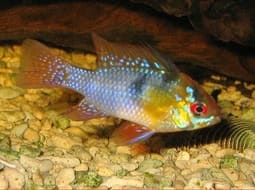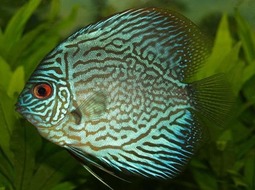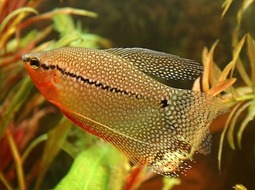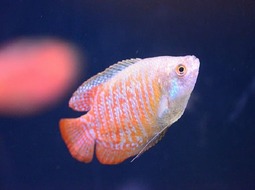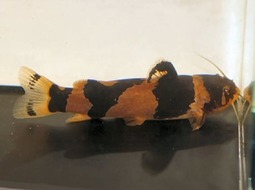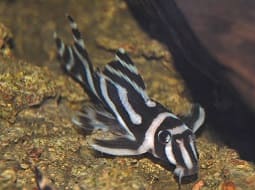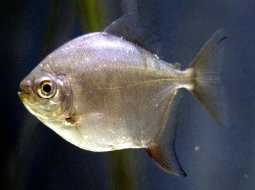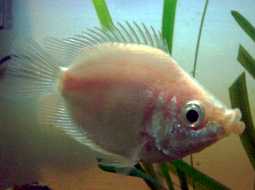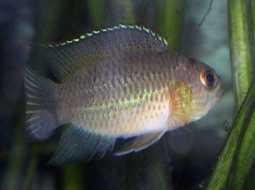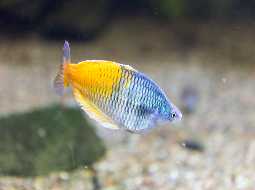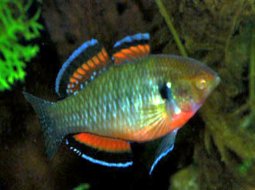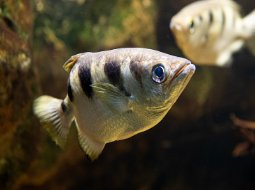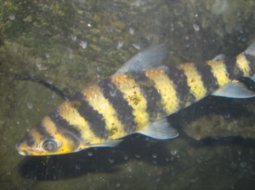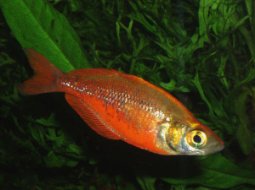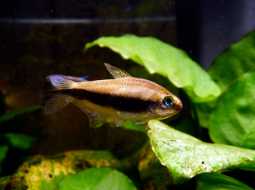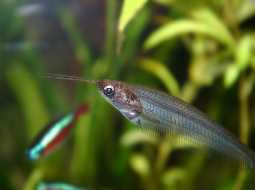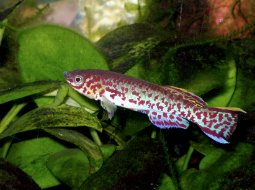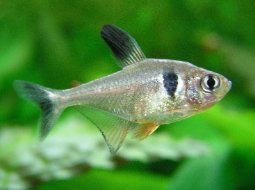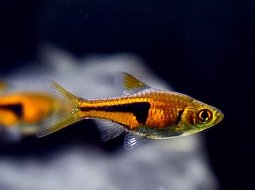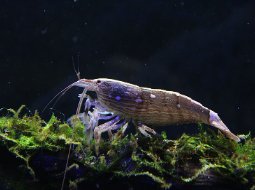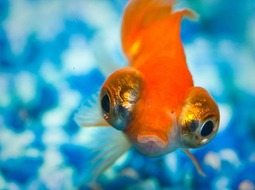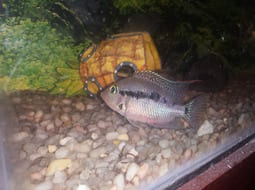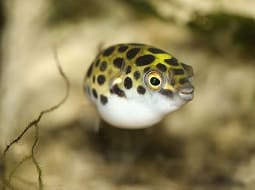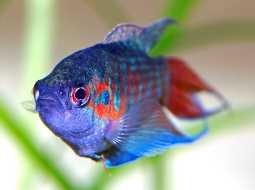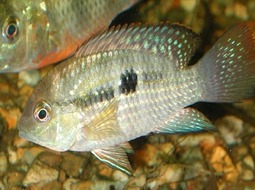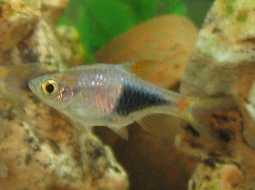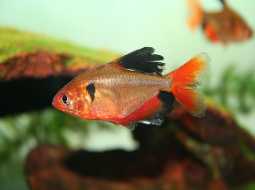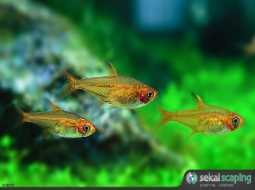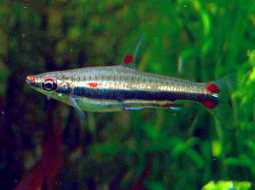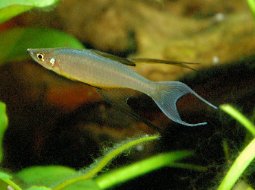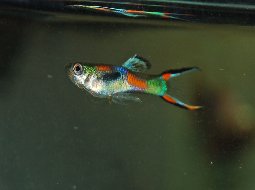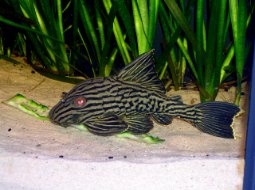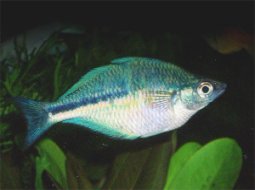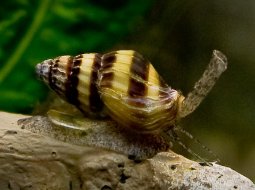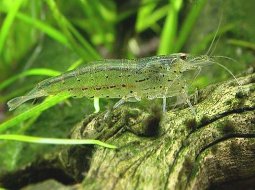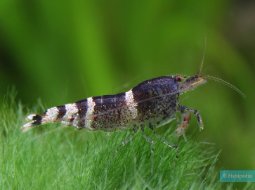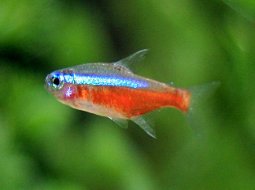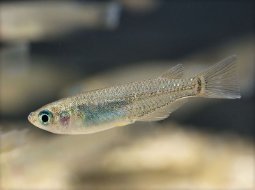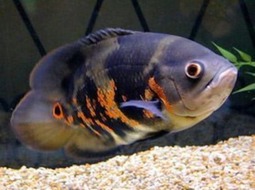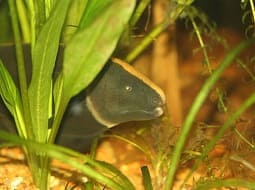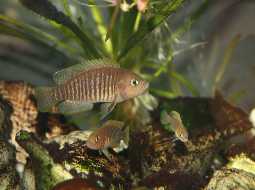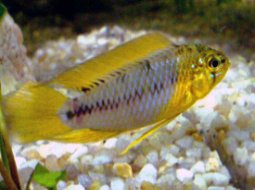
Loading Aqualapp ...
Care and Compatibility of Severum Cichlid - Heros efasciatus
Introduction
The Heros efasciatus, commonly known as Severum Cichlid, is a species of freshwater fish native to South America. It is characterized by its robust body and vertical stripes pattern in shades of green, gold, and red. They are popular fish in the aquarium hobby due to their colorful appearance and interesting behavior.
Behavior
Severum Cichlids are territorial fish and can display aggressive behavior towards other fish of their own species or different species. However, their level of aggression can vary, and some individuals can be more peaceful than others. It is recommended to provide them with a spacious aquarium with hiding spots and exploration areas to reduce potential conflicts. They are omnivorous and accept a variety of foods, including commercial flakes or pellets, as well as live or frozen foods. Regarding reproduction, Severum Cichlids are mouthbrooders, which means that the female incubates the eggs in her mouth until they hatch. It is important to provide suitable spawning sites and proper care for the fry if breeding this species in the aquarium.
Sexual Dimorphism
Sexual dimorphism in Heros efasciatus is minimal and difficult to distinguish. Both males and females have a similar appearance. However, during the breeding season, males may exhibit more intense colors and courtship behaviors towards females.
Reproduction
The reproduction of Severum Cichlids is interesting and fascinating. They are mouthbrooders, meaning that the female incubates the eggs in her mouth until they hatch. Prior to breeding, it is important to provide them with suitable spawning sites, such as caves or flat surfaces where they can deposit the eggs. Once the female has taken the eggs into her mouth, the male may become territorial and guard the nearby area. During this period, it is important to provide the female with nutritious foods, such as live or frozen foods, to maintain her health and strength during the incubation. After hatching, the fry can be reared in a separate aquarium with appropriate food for their growth and development.
Aquarium Conditions
Heros efasciatus, also known as Severum, is a colorful and peaceful cichlid that requires a spacious aquarium with hiding spots and open swimming areas. It prefers warm, slightly acidic water, with décor including rocks, driftwood, and sturdy plants. It's important to provide them with a peaceful environment and avoid overcrowding.
Feeding
Severum Cichlids are omnivorous fish and accept a variety of foods. They can be fed with high-quality commercial flakes or pellets that contain a balanced mixture of proteins, fats, and carbohydrates. They also enjoy live or frozen foods such as bloodworms, daphnia, brine shrimp, and mosquito larvae. It is recommended to provide them with a varied diet to ensure their proper nutrition.
Complexity
Caring for Heros efasciatus is moderately easy. They are robust fish that can adapt to a variety of water conditions. They are omnivores and accept a variety of foods, but may become territorial during breeding. It's recommended to keep them in pairs or large groups to distribute aggression.
In case you need more help, or if you want to know into any topic related to the Heros efasciatus (Severum Cichlid) and even any other species you can use the forums to ask what you need.
To do an analysis more detailed about coexistence and behavior of Heros efasciatus (Severum Cichlid) use the Aquarium simulation tool, if you do this you can test different ways to combine the Severum Cichlid with other fishes giving the dimensions and space on you aquarium, on this way you can known the optimal configuration for keep the fishes that you want.
You can also find out the 103 species compatible with the Heros efasciatus (Severum Cichlid) can live together.
Note: The parameters of the water such as PH and temperature are also used to calculate the compatibility of the species.
Compatible species (103)
Compatible (36 Species)
Compatible without any restriction
Similar Sizes (16 Species)
They can live together if they are of similar sizes, but obviously the koi fish will grow and the time will come when it could fit through the mouth of the koi fish and eat it.
They can coexist if they are the same size or very similar sizes, it does not work in all cases, there may be exceptions.
With Reservation (11 Species)
Compatible in some cases, it depends on the nature and personality of the fish.
Showdown over territory (2 Species)
Fish can live together as long as the space is spacious enough to delimit a territory, otherwise there may be aggressions for competing for the territory.
Considerable size difference (30 Species)
They can coexist while they are similar in size or the size difference is not very abysmal, since as the fish grows it increases the chances of eating its partner that did not grow much.
Compatible if space is enough (8 Species)
If they have space and there are no partners there should be no problems
They can coexist together if the aquarium they share is large and spacious enough for both species to feel good, as some fish may attack others to feel that they have little space and try to eliminate the competition.
Severum Cichlid
Heros efasciatus

- Ph: 6.5 - 7.5
- Temperature (c°): 24 - 30
- Measures: 15 cm
- Aquarium Capacity:
23 Liters - 6 Gallons - Alimentación: Carnivores
- Colores: Brown, Green, Gris, Orange
- Comportamiento: Semi Aggressive, Territorial
- Habitad: American
- Preferencias del Acuario: Logs, Natural plants, Rocks
- Tamaño: Medium
- Taxonomía: Fish
- Tipo de Agua: Sweet water, Tropical waters
- Velocidad de nado o movimiento: Normal
- Zona de Nado: Swim in the middle of the aquarium




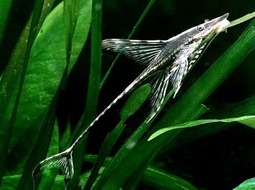
.jpg)

